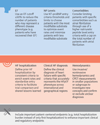Patient selection in heart failure with preserved ejection fraction clinical trials
- PMID: 25908073
- PMCID: PMC4713836
- DOI: 10.1016/j.jacc.2015.03.043
Patient selection in heart failure with preserved ejection fraction clinical trials
Abstract
Recent clinical trials in patients with heart failure with preserved ejection fraction (HFpEF) have provided important insights into participant selection strategies. Historically, HFpEF trials have included patients with relatively preserved left ventricular ejection fraction ranging from 40% to 55% and a clinical history of heart failure. Contemporary HFpEF trials have also incorporated inclusion criteria such as hospitalization for HFpEF, altered functional capacity, cardiac structural and functional abnormalities, and abnormalities in neurohormonal status (e.g., elevated natriuretic peptide levels). Careful analyses of the effect of these patient selection criteria on outcomes in prior trials provide valuable lessons for future trial design. We review recent and ongoing HFpEF clinical trials from a patient selection perspective and appraise trial patient selection methodologies in relation to outcomes. This review reflects discussions between clinicians, scientists, trialists, regulators, and regulatory representatives at the 10th Global CardioVascular Clinical Trialists Forum in Paris, France, on December 6, 2013.
Keywords: clinical protocols; methodology; natriuretic peptides; patient selection.
Copyright © 2015 American College of Cardiology Foundation. Published by Elsevier Inc. All rights reserved.
Conflict of interest statement
Figures



References
-
- Go AS, Mozaffarian D, Roger VL, et al. American Heart Association Statistics Committee and Stroke Statistics. Subcommittee Executive summary: heart disease and stroke statistics--2014 update: a report from the American Heart Association. Circulation. 2014;129:399–410. - PubMed
-
- McMurray JJ, Petrie MC, Murdoch DR, et al. Clinical epidemiology of heart failure: public and private health burden. Eur Heart J. 1998;19(Suppl P):9–16. - PubMed
-
- Owan TE, Hodge DO, Herges RM, et al. Trends in prevalence and outcome of heart failure with preserved ejection fraction. N Engl J Med. 2006;355:251–259. - PubMed
-
- Steinberg BA, Zhao X, Heidenreich PA, et al. Trends in patients hospitalized with heart failure and preserved left ventricular ejection fraction: prevalence, therapies, and outcomes. Circulation. 2012;126:65–75. - PubMed
Publication types
MeSH terms
Substances
Grants and funding
LinkOut - more resources
Full Text Sources
Other Literature Sources
Medical
Molecular Biology Databases

